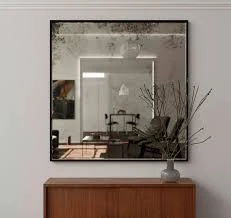

The Fascinating World of Low Energy Glass A Sustainable Solution for Modern Architecture
In an era where sustainability is at the forefront of global discussions, the concept of low energy glass emerges as a beacon of innovation in the field of architecture and construction. This remarkable material not only enhances the aesthetic appeal of buildings but also plays a crucial role in reducing energy consumption, paving the way for a greener future.
Low energy glass, often referred to as energy-efficient or high-performance glass, is designed to minimize the amount of energy lost through windows and facades. Standard glass allows a significant amount of heat to escape from buildings, leading to increased energy consumption as heating systems work overtime to maintain comfortable indoor climates. In contrast, low energy glass features advanced coatings and inert gas fillings that significantly enhance its thermal performance. These specialized properties enable it to reflect heat during the summer and retain warmth in the winter, effectively moderating indoor temperatures.
One of the most significant advantages of low energy glass is its ability to contribute to energy savings. By using this material, buildings can achieve substantial reductions in their heating and cooling requirements. This not only leads to lower energy bills for homeowners and businesses but also decreases the carbon footprint associated with energy production. As governments worldwide set ambitious targets for lowering greenhouse gas emissions, the implementation of low energy glass in new constructions and renovations becomes increasingly essential.
Moreover, low energy glass enhances natural light penetration while maintaining privacy and reducing glare
. This characteristic is particularly beneficial in commercial spaces, where creating a bright and inviting atmosphere can significantly influence productivity and employee well-being. The aesthetic versatility of low energy glass allows architects to design expansive glass facades that maximize daylight without compromising energy efficiency. As a result, buildings can be both breathtaking and ecologically responsible.
The technology behind low energy glass continues to evolve, with innovations such as triple glazing and dynamic glazing gaining popularity. Triple glazing involves three layers of glass separated by gas-filled spaces, providing exceptional insulation and soundproofing properties. Dynamic glazing, on the other hand, allows users to adjust the tint of the glass in real-time, optimizing both illumination and thermal comfort according to the changing conditions outside. These advancements further enhance the performance of low energy glass and expand its applications in various types of buildings, from homes to high-rise office towers.
Another noteworthy attribute of low energy glass is its contribution to indoor air quality. Traditional windows often allow for air infiltration, which can lead to drafts and increased energy use. Low energy glass systems are designed with energy efficiency in mind, often incorporating argon or krypton gas between the panes to create a more stable indoor environment. This means fewer fluctuations in temperature and humidity, resulting in improved comfort and health for occupants.
As the demand for sustainable construction practices grows, the adoption of low energy glass is becoming more widespread. Regulatory frameworks and green building certifications, such as LEED (Leadership in Energy and Environmental Design) and BREEAM (Building Research Establishment Environmental Assessment Method), have begun to favor developments that integrate such energy-efficient materials. This shift in focus is not just about meeting regulatory requirements; it reflects a broader cultural change towards environmental consciousness and responsible design.
In conclusion, low energy glass represents a significant advancement in building materials, aligning modern architectural aesthetics with sustainability. Its ability to improve energy efficiency, enhance indoor comfort, and reduce environmental impact makes it an indispensable choice for architects and builders committed to creating a more sustainable future. As technology continues to advance and society increasingly prioritizes environmental issues, the role of low energy glass in shaping our architectural landscape will undoubtedly grow, leading us toward a world where beauty and sustainability coexist in harmony.